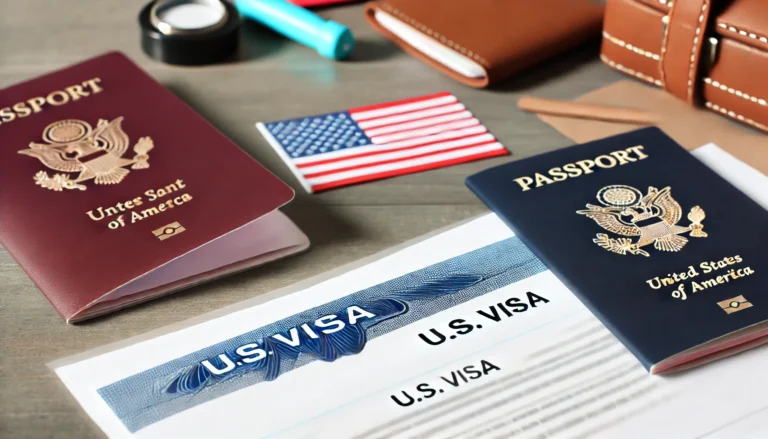Understanding the Immigrant Visa (Green Card)
Introduction
An Immigrant Visa, commonly referred to as a Green Card, allows foreign nationals to live and work permanently in the United States. The process of obtaining a Green Card can be complex and involves several steps, eligibility criteria, and different categories. This guide provides an overview of the types of Green Cards, the application process, and essential tips for prospective applicants.
Understanding the Immigrant Visa (Green Card)
What Is a Green Card?
A Green Card is a document that grants foreign nationals permanent residency in the U.S. Green Card holders have the right to live and work in the country indefinitely, travel outside the U.S., and eventually apply for U.S. citizenship if they meet specific requirements.
Benefits of Having a Green Card
- Permanent Residency: Live and work in the U.S. without restrictions.
- Path to Citizenship: Eligibility to apply for U.S. citizenship after a certain period.
- Family Sponsorship: Ability to sponsor family members for permanent residency.
- Access to Benefits: Eligibility for certain government benefits and services.
Categories of Immigrant Visas
There are several categories of immigrant visas, each with specific eligibility criteria:
1. Family-Based Green Cards
Family-based immigration allows U.S. citizens and lawful permanent residents to sponsor their relatives for permanent residency.
- Immediate Relatives: Spouses, unmarried children under 21, and parents of U.S. citizens.
- Family Preference Categories: Other relatives, including siblings and married children of U.S. citizens, and spouses and children of lawful permanent residents.
2. Employment-Based Green Cards
Employment-based immigration is for foreign nationals who have job offers from U.S. employers or possess extraordinary abilities in their fields.
- EB-1: Priority workers, including individuals with extraordinary ability, outstanding professors or researchers, and certain multinational managers.
- EB-2: Professionals with advanced degrees or exceptional abilities.
- EB-3: Skilled workers, professionals, and other workers.
- EB-4: Special immigrants, including religious workers and certain other classes.
- EB-5: Immigrant investors who invest in a U.S. business and create jobs.
3. Diversity Visa Program
The Diversity Visa Lottery provides a limited number of Green Cards each year to individuals from countries with low rates of immigration to the U.S. Applicants must meet specific eligibility requirements and be selected in the lottery.
4. Refugee and Asylum Status
Individuals granted refugee or asylum status may apply for a Green Card one year after their status is granted.
The Application Process
The process of obtaining a Green Card typically involves the following steps:
1. Determine Eligibility
Identify the appropriate category for your Green Card application based on your circumstances (family sponsorship, employment, etc.).
2. File the Appropriate Petition
- Family-Based: A U.S. citizen or lawful permanent resident must file Form I-130 (Petition for Alien Relative) for family-based applications.
- Employment-Based: An employer must file Form I-140 (Immigrant Petition for Alien Worker) for employment-based applications.
- Diversity Visa: Complete the online entry form during the registration period.
3. Wait for Petition Approval
USCIS will review the petition and, if approved, will send it to the National Visa Center (NVC) for processing.
4. Complete the Visa Application
Once notified by the NVC, complete Form DS-260 (Online Immigrant Visa Application) if applying from outside the U.S.
5. Attend the Visa Interview
- Schedule an interview at a U.S. Embassy or Consulate.
- Bring required documentation, including your passport, photographs, medical examination results, and financial support documentation.
6. Receive Your Green Card
If the visa application is approved, you will receive your Green Card upon entering the U.S. or after approval of your adjustment of status application (Form I-485) if already in the U.S.
Important Tips for Green Card Applicants
- Prepare Documentation: Ensure you have all required documents, including identity proof, financial information, and health records.
- Be Honest: Provide accurate information in all forms and during interviews. Misrepresentation can lead to denial.
- Consult an Immigration Attorney: Consider seeking legal advice, especially for complex cases or unique circumstances.
- Stay Informed: Keep up with any changes in immigration laws or policies that may affect your application.
- Be Patient: The Green Card process can take time, depending on the visa category and processing times.
Conclusion
The Immigrant Visa (Green Card) process is a vital pathway for foreign nationals seeking permanent residency in the United States. By understanding the various categories of Green Cards, the application process, and essential tips, you can better navigate your journey toward permanent residency in the U.S.
For more information on the Green Card application process, visit the U.S. Citizenship and Immigration Services (USCIS) website.

